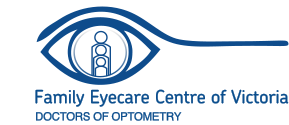Semaglutide, a glucagon-like peptide-1 receptor agonist (GLP-1 RA), has become a cornerstone treatment for managing type 2 diabetes and, more recently, obesity. Its ability to lower blood sugar levels, promote weight loss, and reduce cardiovascular risk has made it a popular choice among healthcare providers. However, as with any medication, semaglutide is not without potential risks. There has been growing interest in its potential association with non-arteritic anterior ischemic optic neuropathy (NAION), a rare but serious condition that can lead to vision loss.
We’ll explore the possible connection between semaglutide use and NAION, examine existing evidence, and discuss what patients and healthcare providers need to consider.
What Is NAION?
NAION is the most common cause of sudden optic nerve-related vision loss in individuals over 50. It occurs when there is impaired blood flow to the optic nerve, leading to damage. The exact cause remains unclear, but NAION is often associated with:
- Vascular Risk Factors: Hypertension, diabetes, and atherosclerosis.
- Anatomical Predispositions: A small or crowded optic nerve head (termed a “disc at risk”).
- Triggers: Sudden blood pressure drops, nocturnal hypotension, or certain medications.
Symptoms of NAION typically include painless vision loss in one eye, often noticed upon waking. The condition can lead to permanent vision impairment, and recurrence in the other eye is possible.
How Could Semaglutide Be Linked to NAION?
There is currently no direct evidence proving that semaglutide causes NAION. However, its pharmacological effects and associated physiological changes have raised concerns:
Blood Pressure Changes
Semaglutide is known to cause modest reductions in blood pressure, which is generally beneficial for most patients. However, for individuals with compromised optic nerve perfusion, even slight decreases in blood pressure, especially during sleep, could potentially increase the risk of NAION.
Glycemic Control and Vascular Impact
Rapid improvements in glycemic control, as seen with semaglutide, may transiently exacerbate microvascular complications. For patients with existing diabetic retinopathy or other microvascular vulnerabilities, this could theoretically contribute to optic nerve ischemia.
Weight Loss and Fluid Shifts
Significant weight loss associated with semaglutide may lead to fluid shifts or changes in blood volume, potentially affecting optic nerve perfusion in susceptible individuals.
What Does the Evidence Say?
Currently, there are no large-scale studies or clinical trials directly linking semaglutide to NAION. However, isolated case reports and pharmacovigilance data have hinted at a potential association. Since NAION is rare, detecting a causal relationship requires robust epidemiological studies.
- Case Reports
A few reports have described NAION occurring shortly after initiating GLP-1 RAs like semaglutide. While these cases are intriguing, they do not establish causation. - Population Risk Factors
Many patients prescribed semaglutide already have underlying conditions such as diabetes and hypertension, which are independent risk factors for NAION. This makes it challenging to disentangle the role of the drug from the baseline risk.
Clinical Implications for Patients and Providers
Given the rarity of NAION and the lack of conclusive evidence linking semaglutide to the condition, the benefits of the medication generally outweigh the risks for most patients. However, specific precautions should be considered:
- Assess Risk Factors: Patients with a history of NAION or those with known vascular risk factors (e.g., severe diabetes, hypertension, or small optic nerve heads) should be closely monitored.
- Monitor Vision Changes: Patients on semaglutide should be educated about the symptoms of NAION, such as sudden vision loss, and encouraged to seek immediate medical attention if they occur.
- Collaborative Care: Optometrists and endocrinologists should collaborate to manage patients with diabetes and pre-existing eye conditions to optimize systemic and ocular health.
Conclusion
Semaglutide remains an effective and widely used medication for diabetes and obesity management. While concerns about a potential link to NAION are worth exploring, the evidence remains limited and inconclusive. Patients should not discontinue the medication without consulting their healthcare provider, as uncontrolled diabetes and obesity carry significant risks of their own.
Further research, including post-marketing surveillance and large-scale studies, is needed to clarify whether semaglutide plays a role in the development of NAION. For now, personalized risk assessment and patient education are key to ensuring safe and effective treatment.
Discuss your concerns about semaglutide or its potential side effects with your optometrist and healthcare provider. Understanding your individual risks and benefits is the first step toward optimal care.



